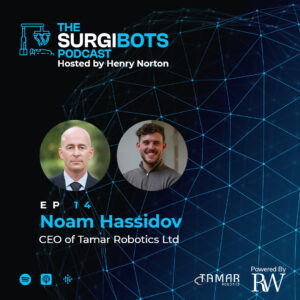Surgibots Podcast
S01 E14
Inside a Cutting-Edge Surgical Robotics Company
On Episode 14 of The Surgibots Podcast I was joined by Noam Hassidov, the CEO of Tamar Robotics LTD, to talk about the advancements that the company is making in neuro robotics.
Listen/watch now

Listen/watch now



